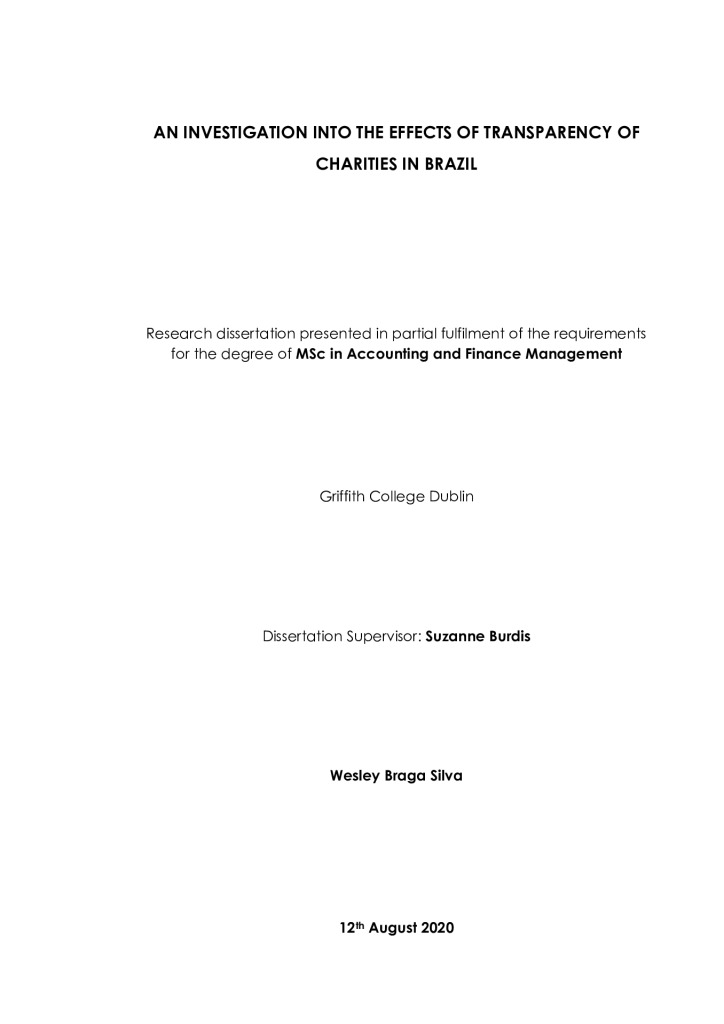690 downloads · 1078 visualizações
An investigation into the effects of transparency of charities in Brazil
This research attempts to ascertain transparency practices and the related financial performance of charitable organisations, and to analyse the financial and non-financial effects of those practices when applied to the context of Brazil. To this end, a sample of 100 charities that won the first awards “100 Best NGOs” promoted by Institute Doar in 2017 was chosen. Medium and large organisations represent a prevalent part (87 NGOs) of the sample (annual average income over 250,000 dollars). The study is divided in 4 stages. In the first and second stages, the author analysed the websites of the organisations and their financial statements, to clarify the transparency practices, and to gather and compare their financial and non-financial information. A survey was sent to all the organisations (39 respondents), utilising international academic theories regarding the effects of transparency for non-profit organisations to identify patterns and differences when those theories are applied to the context of Brazil and also to discover new hypothesis . As the last stage, an interview with 5 participants was conducted to gain a deeper understanding about their transparency practices and its effects. Quantitative and qualitative analysis were applied to interpret the data while comparing the results to international scholars.
The study found that among the most common transparency practices of these organisations are: disclosure of the name of the directors and board members of the organisation, and publication of the financial statements and activity report on their websites.
Participantes






